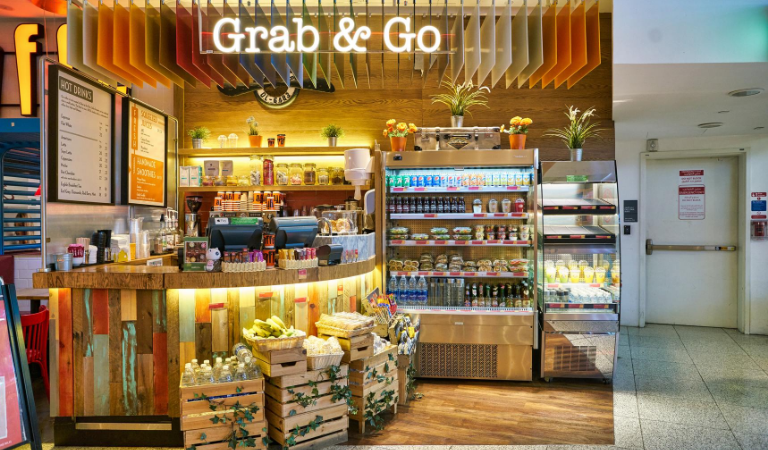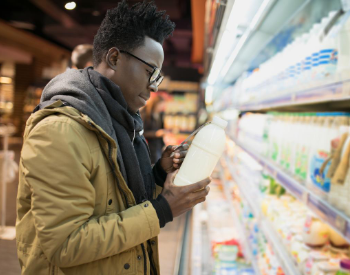With the recent influx of to-go orders, your restaurant, hotel, or bakery might be considering adding a grab-and-go meal section for customers. As restaurant owners, it’s important to keep in mind that the way your food and beverage items are packaged matters. If you’re looking to serve premade meals and beverages at your establishment, consider including a food label on the packaging of your menu items. Food and beverage labels keep meals organized and neat looking, so customers can identify their desired meals, while employees can package and serve foods in a hassle-free manner.
Why Should You Label Your Prepared Foods & Beverages?
Food labels are extremely helpful for customers and employees alike and present an easy way to achieve organization and reduce waste at your restaurant. Depending on the look you’re going for on your food packaging, food labels can either be printed or handwritten. Below are some of the benefits labeling prepared items has for your business.
1. Minimizes Unnecessary Contact
Keeping a safe and sanitary work environment at your restaurant is extremely important for your employees and your customers. To avoid the spread of germs in your establishment, you must start by lowering the number of direct contact customers and employees make with your grab-and-go foods.
By using food labels on both your food and beverage items, you can keep meals organized and minimize unnecessary contact. Employees can read juice bottle labels or take out box labels to easily separate packaged foods without having to excessively sort through them. Customers can identify their desired meal or drinks by reading the unique labels on menu items, without having to touch other premade meals.
2. Increases Order Accuracy
One of the largest customer-facing issues restaurants face is mixed up or inaccurate orders. In order to keep customers satisfied at your restaurant, you must make sure your to-go meals are properly organized. At first glance, many of your premade meals might look the same to customers and may cause confusion. Employees might also be spending extra time sorting through prepared foods and beverages and will benefit from using labels to streamline their work.
Using food and beverage labels to accurately label your establishment’s menu items allows customers to clearly identify what they’re looking for and avoid any misunderstandings. Order accuracy is essential in maintaining a positive image of your business for customers, as customers themselves often drive and boost potential traffic to your establishment.
3. Enhances Organization
If you are constantly looking for ways to improve the organization in your commercial kitchen, labeling food and drink items is extremely helpful for employees and customers alike. As meals are being prepared, keep food labels nearby so employees can accurately markdown and separate different foods to avoid any confusion. If your restaurant’s menu includes major food allergens, food labels can also aid in preventing any possible contaminations while serving customers.
4. Reduces Waste
Believe it or not, placing food labels on your menu items is a great way to reduce waste at your restaurant. Restaurant owners are aware of how costly purchasing an excessive amount of ingredients can be, just for your inventory to go bad. Food often spoils if it goes unused for a certain amount of time, and that can drastically impact your restaurant’s budget for inventory. Food and beverage labels help eliminate this issue because you can mark down their expiration dates to help prevent over purchasing and the amount of food wasted. Adding the date mark on your food item labels is a great way to lower the risk of foodborne illnesses at your restaurant, especially foods or drinks made with temperature-sensitive ingredients.
5. Enforces Branding
Including a food or beverage label on your prepared meals is the perfect advertising opportunity for your foodservice establishment. Creating a cohesive look in your take out supplies is an essential part of branding and bringing in potential customers. Consider placing your restaurant’s logo on labels or using colorful labels that match the aesthetic of your establishment. By having your restaurant’s logo on your customer’s foods and drinks, you can easily spread the word about your business while maintaining the look of your brand.
If you have just started offering prepared meals and to-go beverages, placing a food label on menu items is the perfect place to advertise any delivery services your establishment has. Ideal for catering services and restaurants alike, simply place your business’s phone number, website, or other contact information on the labels. Customers will then be able to order from your restaurant or help bring in traffic.
6. Streamlines Catering Orders
Using food and beverage labels to package catered lunches and assembled meals will allow your company to stand out from the competition. Food labels add a professional and organized look to containers, which clients greatly appreciate when they are providing food to their offices or guests. Clearly written labels make it easy for customers to separate and identify their desired food items, especially with larger orders. The extra step your business takes by adding food and beverage labels to prepackaged meals will show clients that your business operates with their convenience in mind.
What Goes On A Food Label?
In order to properly label your prepared to-go meals for customers, here are some helpful suggestions for what to include in your packaging. Before labeling your meals be sure to check your state’s food labeling requirements.
- Name of food or menu item
- Net weight
- Date mark
- List of ingredients
- Allergy warnings if needed
- Storage instructions
- Country or state of origin
- Logo
What Goes On A Beverage Label?
To properly label your to-go beverages for customers, here are some helpful suggestions for what to include in your packaging. Before labeling your drinks be sure to check your state’s beverage labeling requirements.
- Name of beverage item
- Capacity
- Date mark
- List of ingredients
- Allergy warnings if needed
- Storage instructions
- Country or state of origin
- Logo









